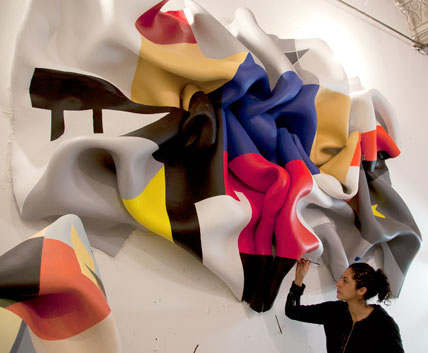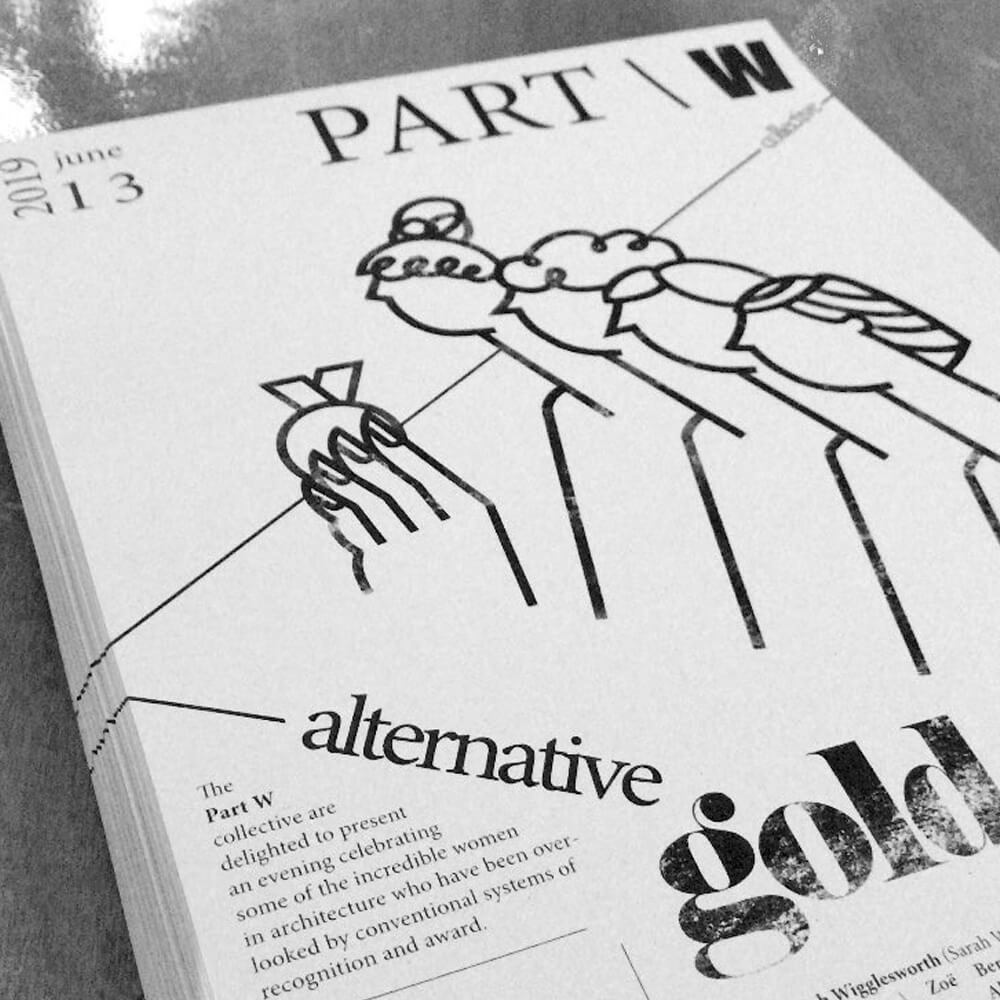Interview with Marela Zacarias

Marela Zacarias, a Gowanus based artist, currently has her work on display at the Brooklyn Museum as part of the second season of Raw/Cooked. She is one of four emerging Brooklyn artists invited by the Brooklyn Museum with support from Bloomberg to show their first major museum exhibitions. Zacarias was inspired by the Williamsburg Murals that are currently on permanent loan by the New York Housing Authority to the Brooklyn Museum.
FRONTRUNNER interviewed Zacarias about her process and current museum exhibition at the Rubin Pavilion on the first floor of the Brooklyn Museum.

Photo credit: Pierce Jackson, ©2013
How did you evolve into creating three-dimensional Paintings? Did you always see this harmony of painting and sculpture or were there years of focusing on one over the other?
I was primarily a painter for 10 years before I started exploring three-dimensional work. The change came about when I tried to bring murals into the gallery space and I started creating three-dimensional mural installations. Then, once in NY (in 2009) the sculptural part of the murals took over my practice along with my interest in patterns and abstraction. That is when I delved into developing my own technique to make sculptures. Painting on them seemed only natural.
Tell me a little about your interest in patterns and color.
I have been interested in pattern and color since I can remember. However, I usually used them in my compositions along with representational images. It wasn’t until I moved to NY to be a full time artist that I felt free to leave representational work behind and concentrate in what I was really drawn to, which is sculptural abstract work. I feel like I found my voice in this new work and It has been very refreshing to move in this direction.

Hunter MFA Thesis Show, 2012
I am interested in the time you spend creating layers for your pieces and the influence of the Brooklyn Museum’s architecture and space. Were there any guidelines to where you could put your work?
There were no real guidelines on where I could put my work. Eugenie Tsai (the Raw/Cooked curator and the contemporary curator at the museum) gave me a tour of the whole museum and showed me which spaces would be totally available for my show. However, they were very open about suggestions on unconventional spaces that I might want to use. In the end I chose the lobby and the great hall because I liked the fact that they were public spaces where people can see the works without paying admission. I also fell in love with the brick wall where I ended up making one of the works. I thought that making a piece there would be a great challenge to undertake. The sculptural part of the work requires a lot of layers to be as strong and light as I make them. The problem is that you can only give one coat a day to each piece, no matter the size, so I usually work on a lot of pieces at the same time. It takes about a month to finish the sculptural part of the works- before I can start painting on them.
All the works at the museum are modular (think of big 3-D puzzles) and I made them at my studio. They were then assembled at the museum to look like they are one piece.

Photo credit: Jessica Halbrecht, 2013
What was it about the Williamsburg Murals at the Brooklyn Museum that inspire you?
I was first drawn to the murals visually but then I really liked their story as objects. I was interested in the concept of resilience of the works and in the idea of bouncing back from adversity. The murals were painted by young unknown avant-garde artists at a time when representational work was the main stream. The years passed and eventually the murals were painted over. It wasn’t until the 80’s that they were re-discovered, restored and placed at the Brooklyn Museum. To me the story of these works is one of triumph over adversity, which is a nice metaphor to think about, specially after events like Sandy (which is when I was writing the proposal for the show). I also really enjoyed that the murals were painted in common areas of the housing projects so that workers could enjoy them after coming back from work. They were meant to aid relaxation.
You have painted over 30 murals. How are you inspired by site specific work?
I enjoy doing site-specific works because each place unlocks different themes and challenges. I like having to react to the history and idiosyncrasies of an environment other than my own. In this way, I am always discovering new things through my work. I learn so much with each project.

Photo credit: Museo del Barrio, New York
Your work is on display until April 28th 2013. What are your future plans?
Right now I am back at the studio working very hard to finish new works. There were a lot of pieces I had to postpone working on because of the museum show and a huge out-door sculptural mural commission I worked on in Vermont during the fall. I am also working in small pieces, which is what I usually do after making such big works. Other than that I am having a lot of studio visits, all which bring new people and opportunities to my life- but nothing I can announce just yet. I guess that is the beauty of being an artist: there in no straight path to follow, only surprises on a curved road.









Responses